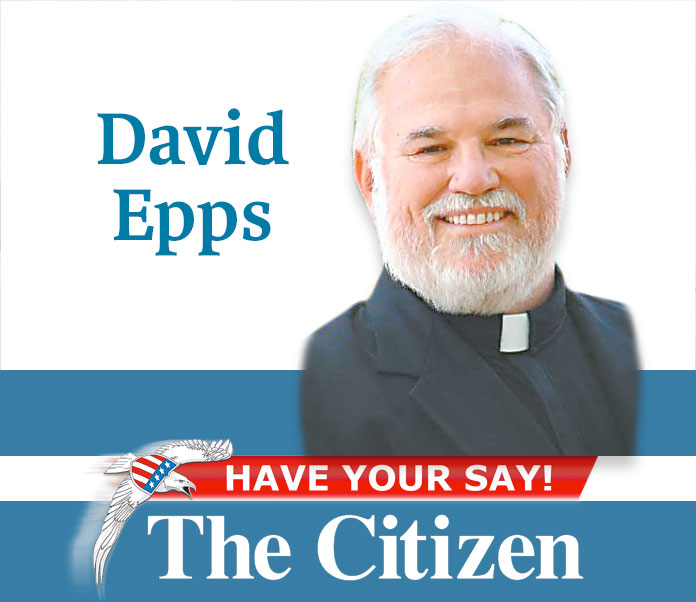There is such a thing as a perfect church. I have seen it. Some 35 years ago, I was looking for a street in Atlanta, back in the days of paper maps, and ended up in an unfamiliar location.
Stopped at a traffic light, I looked across the way and there it was — a church building with its name, “The Perfect Church,” on the sign. I have since also located congregations named “The Perfect Church” in Houston, TX and in Portland, OR. I assume there are other centers of perfection elsewhere in the country.
Normally, when a church is named, the founders are trying to convey some sort of message. It may be a location. Jerry Falwell’s church in Lynchburg, VA, was Thomas Road Baptist Church. The message? It’s a Baptist church on Thomas Road.
In Bristol, VA there is a large church, the State Street United Methodist Church. However, it’s not on State Street. It was but, in 1953, the church relocated to West Valley Drive. We didn’t have Google back then so I tried to find it and drove up and down State Street for over an hour. I’ve always wondered why they didn’t change the name.
In California, Robert Schuller named his church the “Crystal Cathedral,” which sounds like something out of “Lord of the Rings,” but was, in fact, a statement on the unique architecture and construction of the building. Often the first church planted by a denomination of that type in a given community is given the name of “First Whatever Church.” First Methodist, First Christian, First Presbyterian, and so forth.
Another group of churches wish to convey an idea, either social or theological. There’s Open Door, Grace, New Beginnings, New Hope, Friendship, Faith, Trinity, etc., most of which precede a denominational identification as in “Friendship Church of God.”
Then there are the names that only the well-connected and Greek language-informed church member will even understand what it means: Maranatha, Koinonia, Zoe, Paraclete, and for the Hebrew-language inclined, Shekinah Church and Hallelujah Church (although “hallelujah” is pretty much retained in translation, whatever the language).
Other churches choose names that are connected with their own heritage. John Wesley Methodist, John Knox Presbyterian, Moody Bible Church, Asbury Methodist, all come to mind.
Others are named after people who were important in the community or in the life of the congregation. My first church was N.G. Taylor Memorial United Methodist Church, a church in Carter County, Tennessee that was well over 100 years old even then and was named after a local Revolutionary War hero.
In more modern times, in order to market the church, the very word, “church” is often dropped altogether. New nomenclatures such as fellowship, world outreach center, chapel, ministry, cathedral (which has a specific meaning but is ignored by those who have little understanding of the term), and tabernacle (which literally indicates a tent).
In 2017, G. Shane Morris, writing for The Federalist, presented an article on what he called, “hilariously trendy church names.” I’m assuming the leaders of these congregations wanted to seen as “hip” by their target audience. Some were what he termed “random word churches.”
Among these were : “City Hope,” “Cornerstone,” “Create Church,” “Destiny City Church,” “Dream City Church,” Intersect Church,” Elevate Church,” “Elevate Life Church,” “Lifebridge Church,” “The Compass Church,” “Reality Church,” and “Rise.”
There were others he called the “gated community churches that sound like subdivisions or apartment complexes.” These were: “Bayside,” “Centerpoint,” “CrossPoint,” “Grace Pointe” (with an “e”—fancy!), “Highpoint,” “LifePoint,” “Crossbridge,” “Crossings,” “Crossroads,” “The Crossing,” “Prairie Heights,” and “The Bridge.”
Another category, in Morris’ article, were the Grocery Store Romance Novel names: The best, he contended, included, “Burning Hearts,” “Door of Hope,” “Epiphany Station,” “Liberating Spirit,” “Mercy Road,” “New Horizons,” “Passion,” “Second Chance Church,” “Shepherd of the Prairie,” “The Nest of Love,” “The Refuge,” and “Word Aflame.”
The Night Club churches: The best few were, “180 Church,” “Dwell,” “Elevate,” “Epic,” “Flow Church,” “Discovery,” Ignite,” “Lighthouse,” “Oasis,” “Submerge,” “The Alley,” “The Encounter,” “The Experience,” “The Pursuit,” “The Spot,” “The Verge,” and my favorite, “Vida Explosiva.”
Then there’s the Spa when “what you really need is a little relaxation and rejuvenation on Sunday — a place where you can get a massage while your pastor brings the message. If you want saunas over sensors, detox over doxology, you need a church whose name sounds like a spa.” Try “Renovate,” “Radiant,” “Coolwater,” “H20 Church,” “Sandals,” “Fresh Life,” “The Healing Place,” or “Wellspring.” Morris, no doubt, ruffled feathers with that article.
And some names are just strange, especially to the outsider. There’s “Beaver Lick Christian Church,” the “Flippin Church of God,” the “Boring United Methodist Church,” “The Church of I Am That I Am,” the “Half Way Baptist Church,” “Little Hope Baptist Church,’ the “Run for You Life International Outreach Chapel,” and, finally, “Hell Hole Swamp Baptist Church.” Imagine: “Where do you go to church?” “I go to Hell Hole Swamp.”
The National Association of Evangelicals reports that 67% of churches in America have dropped their denominational names from the signage or advertising. Morris states that churches either don’t know who they are or are afraid of who they are.
I’m not sure that’s the case. I mostly think that churches are just trying to get people through the doors and think that names will help attract people. But half of Americans prefer denominational names; the other half do not. So, it’s a crap shoot.
I was vacationing on St. Simon’s Island a couple of years ago and was looking for a church to visit. I deliberately eliminated those that did not self-identify. I wanted to know what kind of church I was potentially walking into.
The problem, as I see it, with trying to be hip or trendy is that, sooner or later, everything hip or trendy becomes old hat. Then you have to look for the “new” relevancy. I know of one church that has had three names in the very same location. I assume that, in time, they will have a fourth, fifth, and, given enough time, a tenth.
When we were choosing a name for our church 23 years ago, we thought about all these possibilities. In the end, we went with a name that conveyed what we wanted it to. We chose “Christ the King” because that’s who we worship and that, to us, is who he is. A thousand years ago or a thousand years from now, the name contains belief, theology, historicity, tradition, validity, and permanence. The other churches in our diocese have basically done the same, naming their churches after one of the apostles, Christ himself, or a theological truth.
I have led two churches through a name change. The first was to change the church’s image. The second was due to a re-location to another county. The first one was a failure. It didn’t help anything and, when I left, the congregation changed it back. The second made logical sense because of the re-location and was the right thing to do.
The reality is that all the churches, at least those who are faithful to biblical, historic, orthodoxy, have the same general goals and work for the same Lord. I attended an enjoyable church in Hawkins County, Tennessee a couple of times that was called, “Cowboy Church.” I road my motorcycle to church, which some folks call a “steel horse,” so I fit right in. In Hattiesburg, MS there’s “The Biker Church.” I have a colleague who was pastor of a biker church in Hogansville. Their names identify their target audiences. And that’s just fine.
Then there’s “Scum of the Earth Church” in Denver, CO. I have no idea who their target audience is.
While all this may be interesting marketing, ultimately it’s virtually meaningless. In the Bible, Jesus said that, “For where two or three are gathered together in my name, there am I in the midst of them” (Matthew 18:20 KJV). His presence is all that matters. The name on the sign is irrelevant. Even if it’s name is “The Perfect Church.”
[David Epps is the pastor of the Cathedral of Christ the King, Sharpsburg, GA between Newnan and Peachtree City (www.ctk.life). He is the bishop of the Diocese of the Mid-South which consists of Georgia and Tennessee and the Associate Endorser for the Department of the Armed Forces, U. S. Military Chaplains, ICCEC. He may contacted at [email protected].]











Leave a Comment
You must be logged in to post a comment.